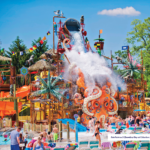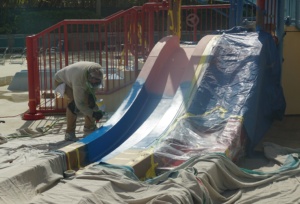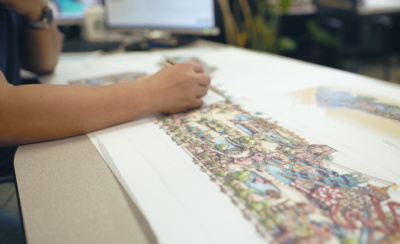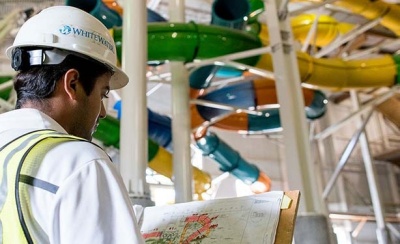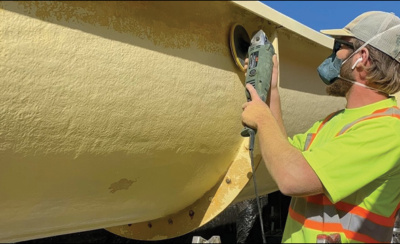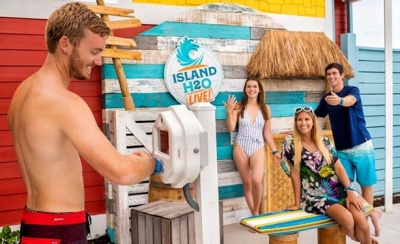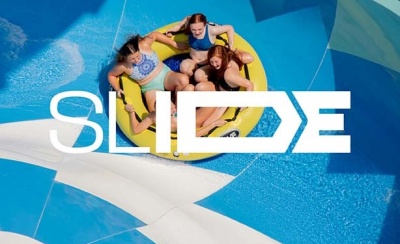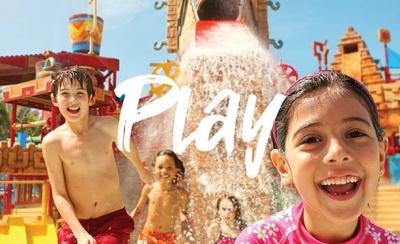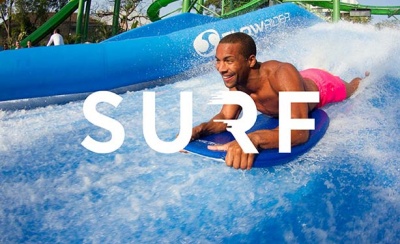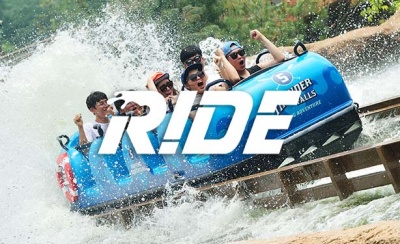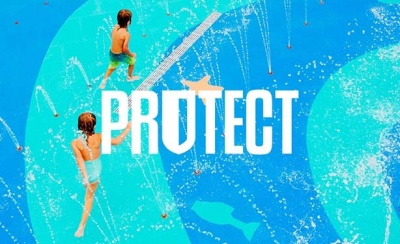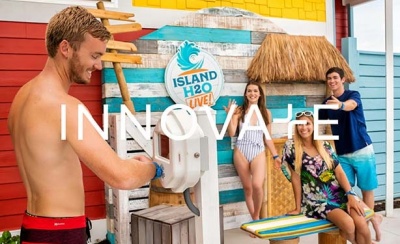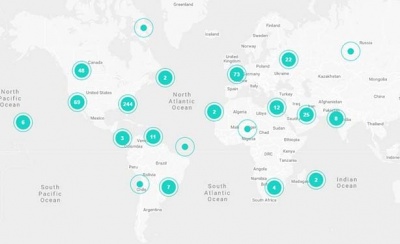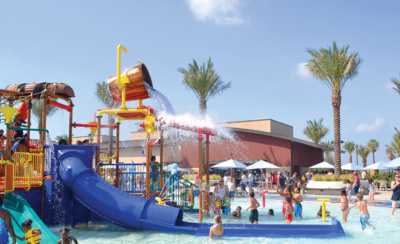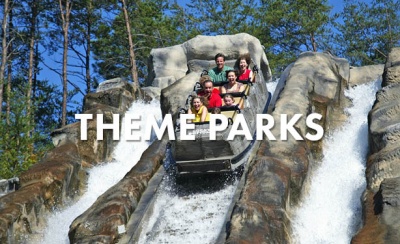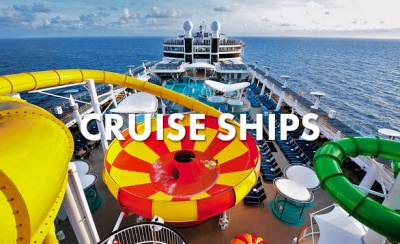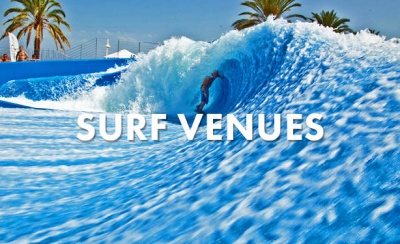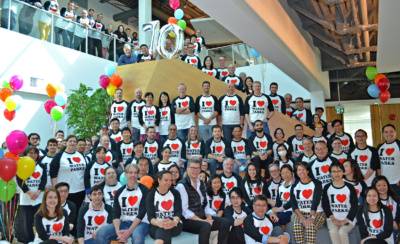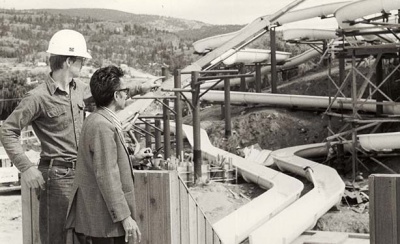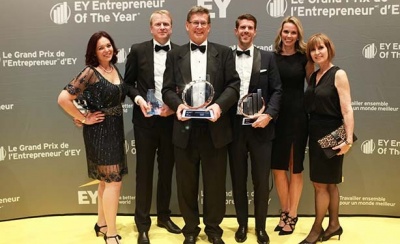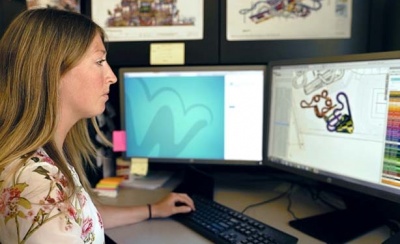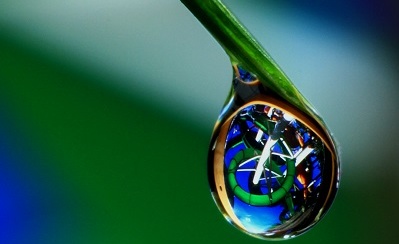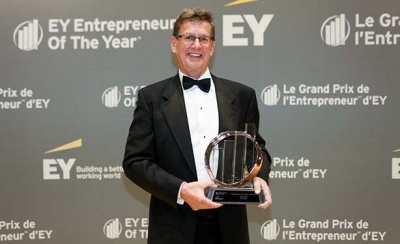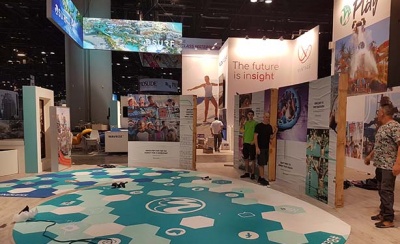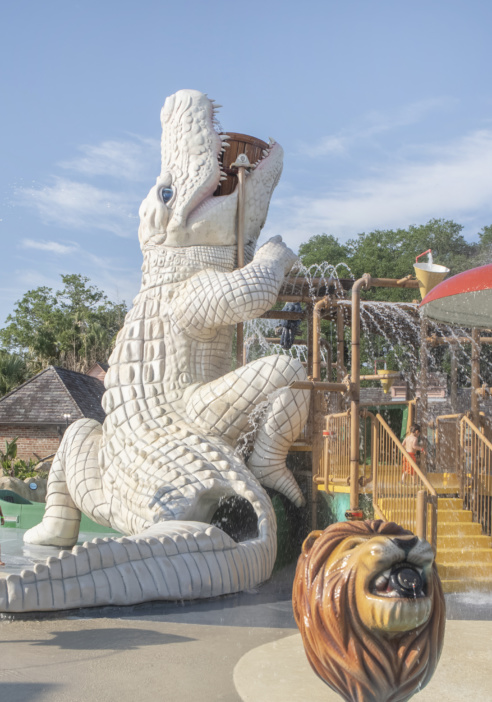
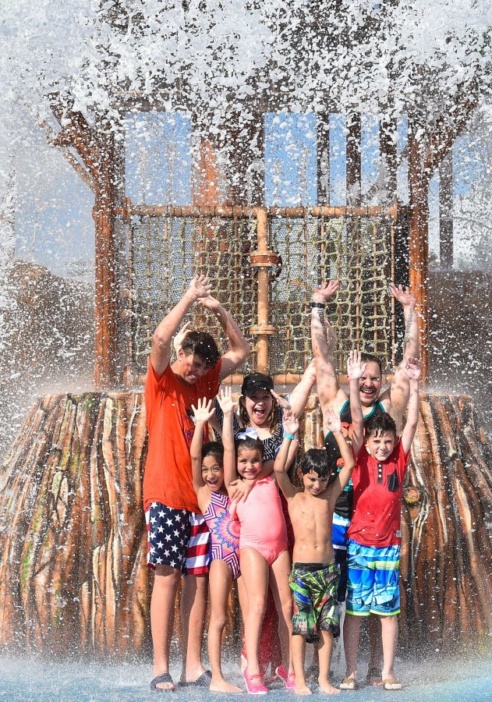
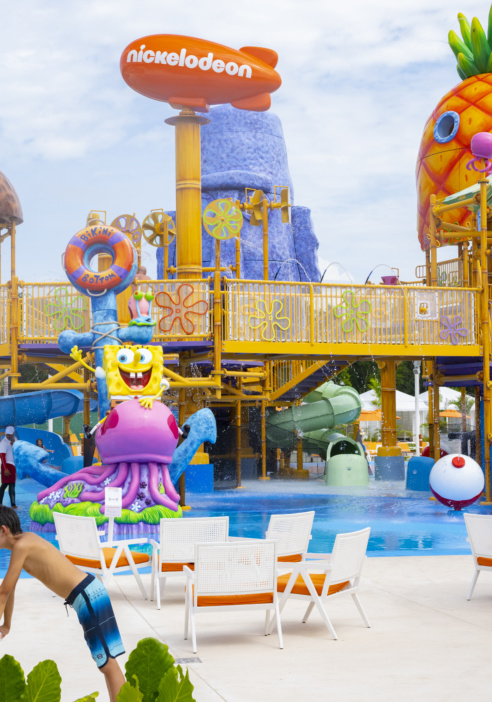
The Evolution of Aquatic Play
While water slides and wave pools are widely regarded as water park staples, play structures and spray features also serve an important role in aquatic entertainment. To fully tell the story of how they came to be, we must go way, way back to the 1800s to the birth of the modern-day playground.
Before Wet There Was Dry
The first major outdoor play space arrived in 1821 in Salem, Massachusetts to teach children how to play safely with one another while keeping them out of the street. Playgrounds entered mass production in the 1960s, just after the major pool craze of the 1950s. At this time, pools had become a new cultural emblem representing a glamorous lifestyle, so it’s no surprise that inventors began to add water to the beloved playground to create an area where families could cool down together.
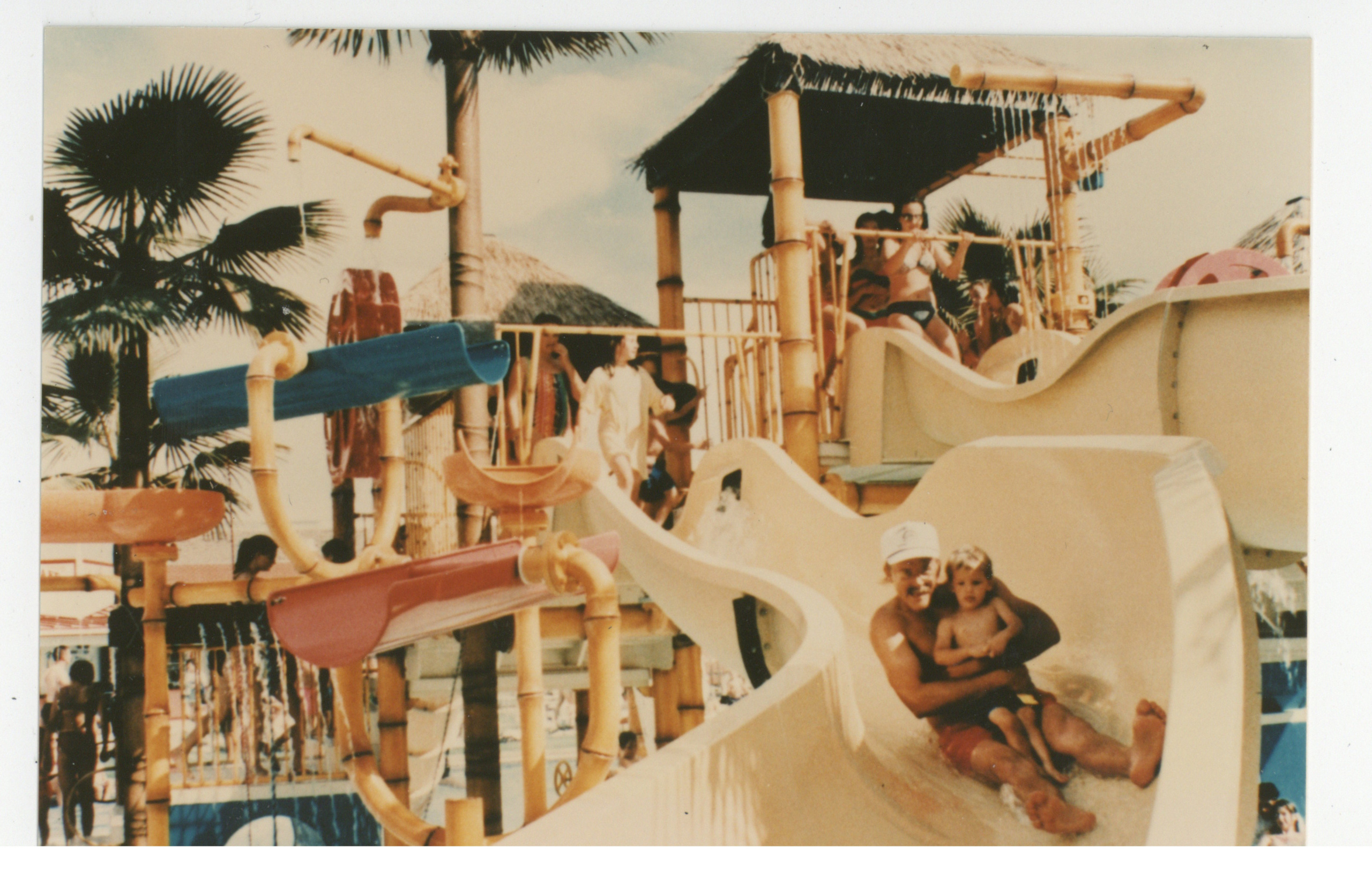
One of the notable adaptions of the playground into a splash pad was at the 1986 World Expo in Vancouver, Canada. Titled UFO H2O, this playful water sculpture utilized the design of a spaceship piloted by a whimsical green Martian that landed in a fantasy landscape of jumping waters. The joyful way the water danced invited children to play in the exhibit.
The Invention of the Multi-Level Interactive Treehouse
Three years after the Expo, in 1989, SCS Interactive filed a patent for a participatory water play system. This system incorporated a plurality of water play elements to create various effects and interactives, enabling play participants to experiment with various cause-and-effect reactions. In other words, these structures offered guests the ability to interact with different devices on the structure, and with each other, rather than passively walking about spray elements as they had in the past. The blueprint for every other play structure on the market, these multi-level interactive structures were dubbed ‘Treehouses,’ with some still existing today.
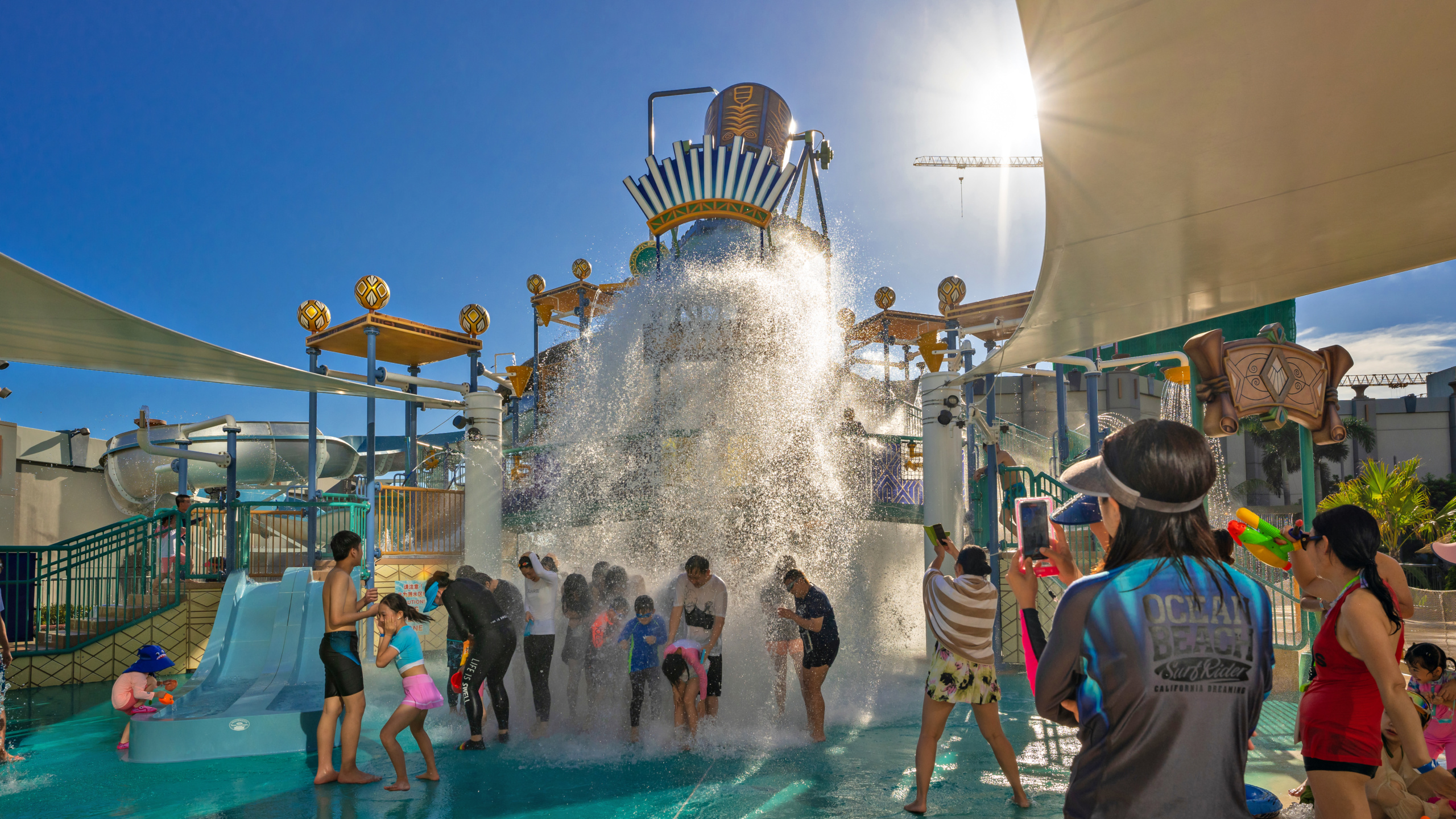
The Invention of the Tipping Bucket
In 1995, WhiteWater entered into a license agreement with SCS Interactive to manufacture water play structures. One of the largest inventions came about during this year with the creation of the tipping bucket. Mastermind behind the original multi-level water play structures, Rick Briggs led the development of the tipping bucket for SCS Interactive by building a mechanism that slowly filled it with water before giving an audible cue when it was nearly full. Once the water in the tipping bucket reached a certain level, it would pour down onto a specially designed splash roof to create a gentle deluge landing on the excited guests waiting below. This iconic splash has since been the most recognizable element of the play structures. Driving anticipation for guests below, the tipping bucket can come in various sizes, most commonly being the 1,200-liter (317-gallon).
Expanding the Portfolio with AquaPlay
In 1999, SCS Interactive licensed its designs to WhiteWater rebranded as AquaPlay, and was officially acquired by WhiteWater in 2005. The team retained all the interactive aspects pioneered by SCS and used this momentum to modernize, using different configurations. This is where we saw the creation of RainFortress, which allowed for a capacity of over 500 people and increased the appeal of play across all ages. Smaller AquaPlay units did not offer older kids the larger, more exciting body slides like RainFortress could. Moreover, RainFortress built up into the air, reaching over 7 meters (24 feet), which enabled the idea of vertical play. This concept meant that different age groups could play on the same structure because there were different elements that appealed to them.
Naturally, RainFortress paved the way for FusionFortress, recognized today as a pocket water park. With a slide tower and raft slides such as the Boomerango and bowl water slides, FusionFortress combines over 100 interactive features from AquaPlay with some of WhiteWater’s most legendary slides, along with two tipping buckets.
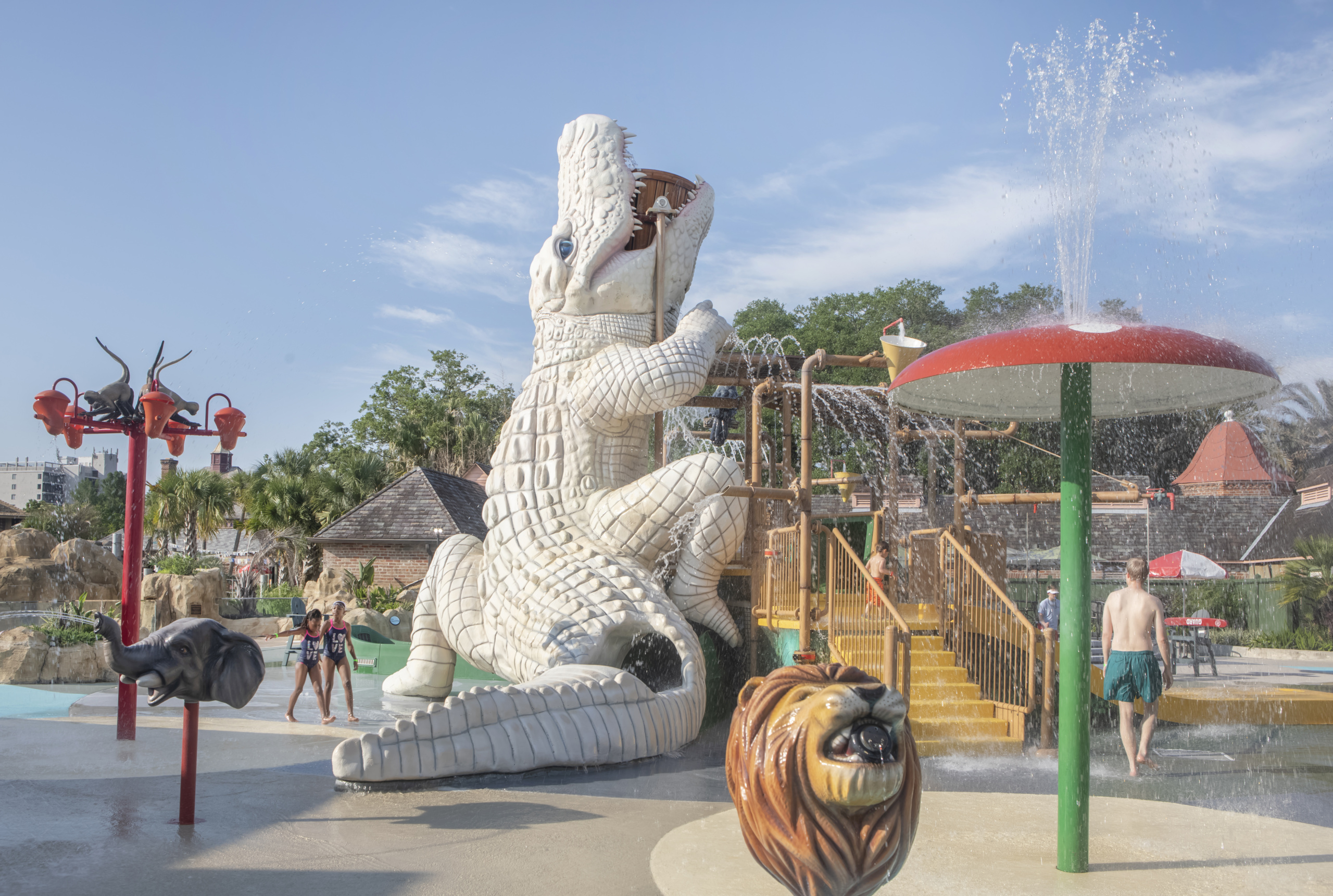
The Rise of Storytelling with Aquatic Play
The early 2000s brought the demand for aquatic play structures with narratives to build on a brand’s unique story. With a talented team of designers on hand, WhiteWater took on more custom theming projects to help tell a seamless story through the park’s characters and integrated the theme within the AquaPlay structure and the water park attractions. For example, in 2002, WhiteWater worked with Lake Compounce to create a clipper ship-themed AquaPlay 1050 for its water park, Crocodile Cove. To replicate the nautical look and feel within the play structure, WhiteWater built a large set of sails and masts to give the illusion that there was a real ship in the park.
Another example of the rise of theming in the early 2000s was the 2011 Audubon Zoo project in New Orleans. Working closely with the zoo, WhiteWater built an AquaPlay 550 with an instantaneous capacity of over 180 guests. The most striking element of the multi-level play structure is the giant white alligator with the tipping bucket between its teeth. Towering over three meters (11 feet) above the ground, the white alligator was hand carved by WhiteWater’s professional artists to create an image synonymous with the zoo. This image is also used to help drive demand for the water park by building excitement before guests even step foot inside.
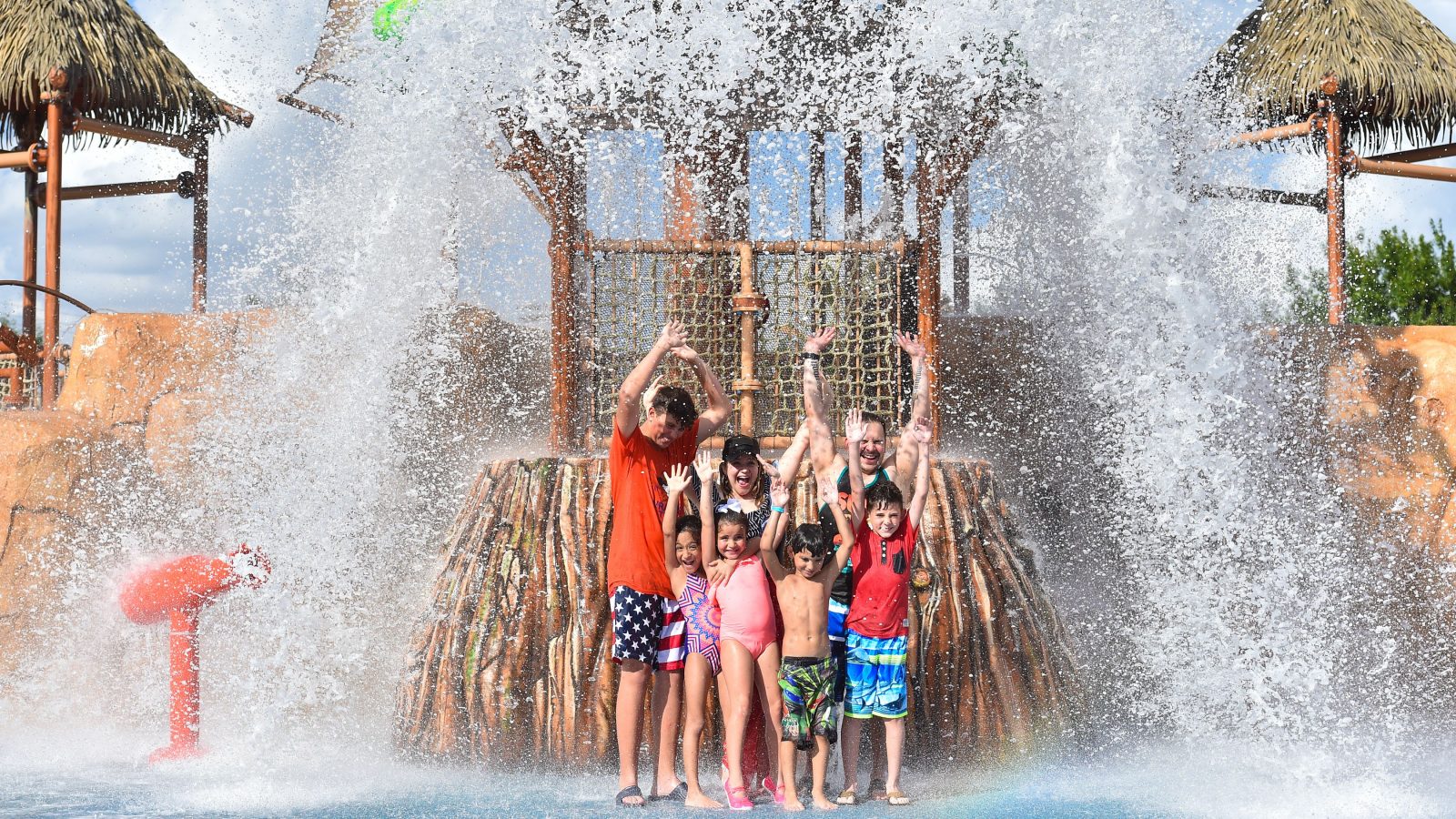
Major Strides in Accessibility
In 2017, WhiteWater was approached to create a park with special needs individuals in mind. Focusing on the play portfolio, the team worked with Morgan’s Wonderland to create Morgan’s Inspiration Island.
Named one of TIME Magazine’s 2018 “World’s Greatest Places,” the park utilized many firsts in the world of accessibility to enable different abilities to play together. The water, for example, is warmed slightly to allow those with muscular issues to have an easier time entering the water, whereas the multi-level play structures have special cues before the water bucket tips. These include visual elements such as a whirling sign for those with hearing difficulties and a custom alarm to not bother guests on the autism spectrum. When the guests see or hear the alarm, they can choose to either back away from the water if they don’t want to be splashed or head to the middle of the drop zone.
Morgan’s Inspiration Island also included little wheels on several of the play features to give further control of the amount of water coming out of the water play features. If someone has physical issues or sensitivities, the intensity level can be lowered so they can enjoy it.
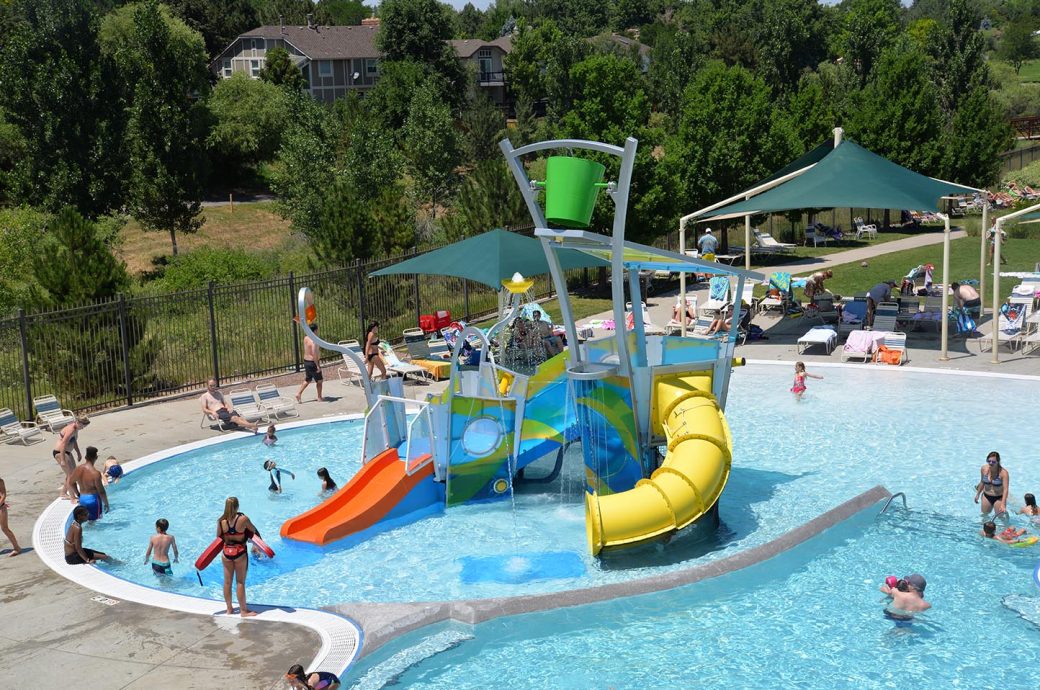
The Launch of AquaForms
In 2018, the team worked on expanding the portfolio once again, this time looking at how to increase interactivity and modularity to afford designers more flexibility in customizing designs to suit the needs of operators, smaller pools, and indoor water parks. Recognizing that there’s more than one way to play, AquaForms was created to cater to how children socialize, explore, and learn. Integrating more intuitive cause-and-effect interactives, AquaForms actively engages guests, increasing the amount of time they stay and play.
Balancing both style and substance, AquaForms uses options for either stainless steel or galvanized carbon steel with a key design element being the monopole. This single support structure creates a much more open area on the ground level, free of steel supports, which is ideal for circulation and ground-based interactive play. With polycarbonate guardrails, AquaForms allows for better visibility both for parents watching and kids playing. The panels can be applied with translucent graphics to achieve a level of theming unique to the look and feel of AquaForms. The most configurable structure in our interactive water play category, AquaForms can also be designed in a variety of models or expanded later. With the success of this advanced play structure, AquaForms has grown into larger units, such as AquaFortress 1800 that incorporate more exciting slides and even family rides.
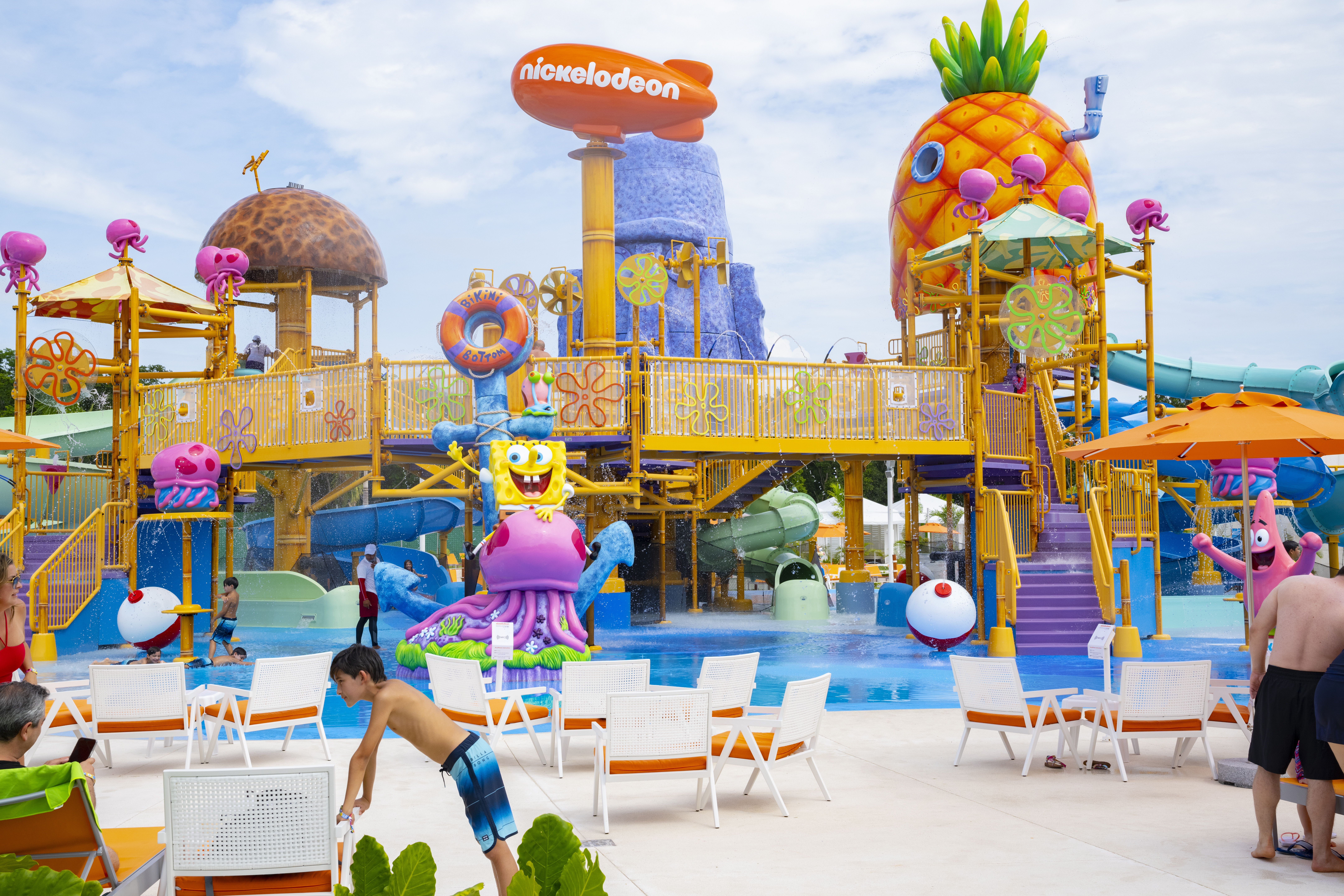
More Immersive Than Ever Before
Just around the corner from Cancun Airport is Nickelodeon Hotel and Resorts Riviera Maya, featuring the water park, Aqua Nick. Covering two-thirds of the hotel’s property, Aqua Nick is the largest theming project that WhiteWater has ever created. Taking storytelling to the next level, the highlight of the park is Bikini Bottom Beach, where SpongeBob SquarePants and his crew take over a RainFortress 5. A multi-level water playground with non-stop action, guests can walk through SpongeBob’s iconic Pineapple house or crawl under Patrick’s rock.
While this RainFortress is custom-designed with themes and figures hand carved by WhiteWater’s talented artists, it also showcases, for the first time, another element that can be customized—the colour of the water. Nickelodeon’s iconic green “slime” sprays out of the structure’s geyser, demonstrating the depth and level of theming that can be achieved if desired.
Extending Park Hours into the Night
Special ticketed events continue to grow as an additional source of revenue for water parks. To cater to this trend, in 2021 the WhiteWater team expanded the functionality of aquatic play to include that of a nighttime spectacular. Water parks can now add a programmable water fountain to either a RainFortress or FusionFortress. Operators can choreograph the fountains on the structure to audio and/or lighting effects to create a whole new level of entertainment. When the sun sets, the structure truly comes alive and dazzles guests as water dances to pre-set music and/or special light effects.
Play Continues to Evolve
The innovation never stops as the team continues to develop new features and models to make the world of play more inclusive and exciting. Whether you’re looking to transport guests with theming into the world of a tropical rainforest or extend the hours of your park with a nighttime spectacle of fountains and lights, our talented team has the technical know-how and artistic abilities to create a one-of-a-kind structure synonymous with your brand.
When it comes to Aquatic Play solutions, choose the team that wrote the book. Contact whitewater@whitewaterwest.com to learn more about bringing aquatic play to your venue.

